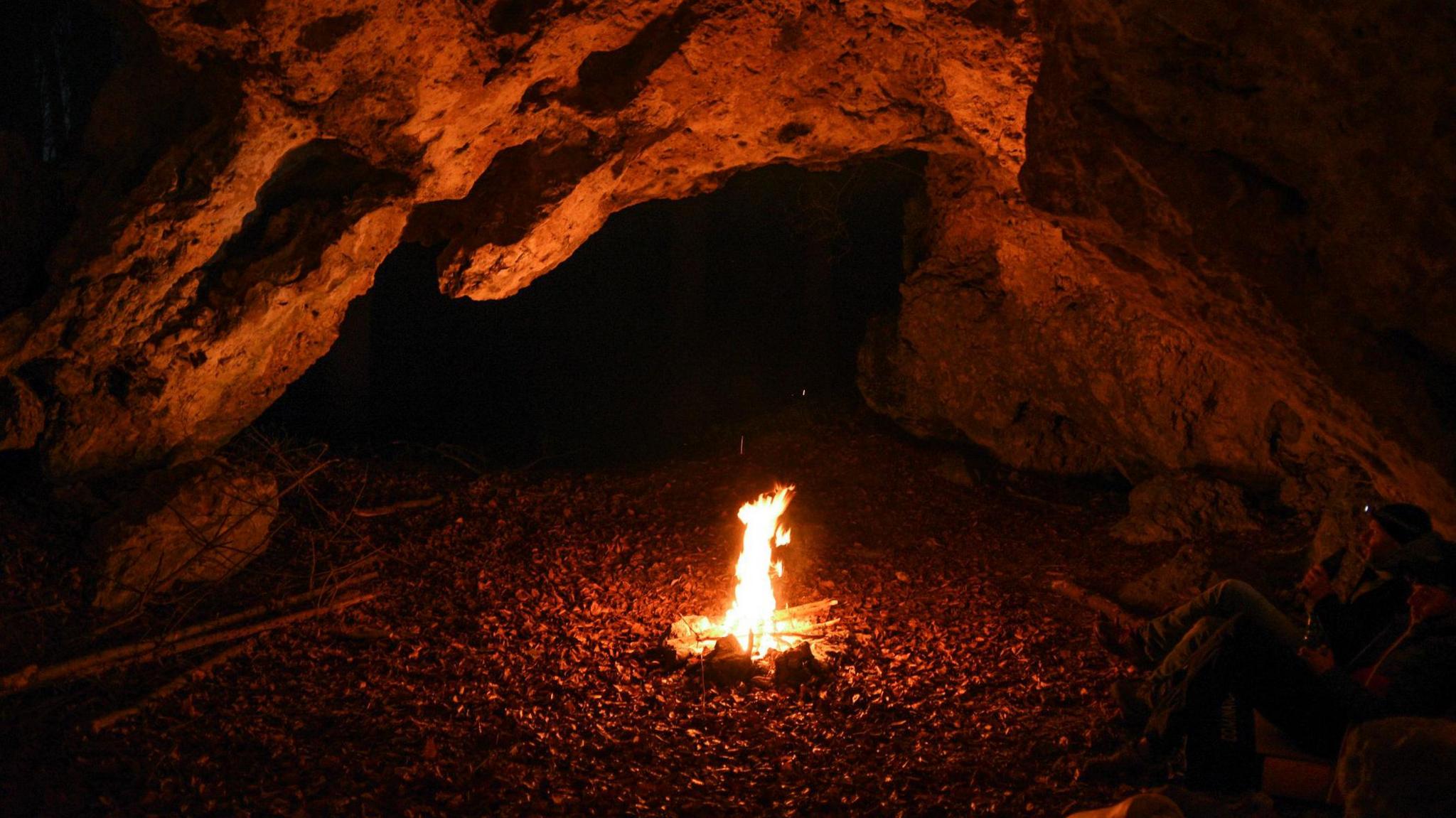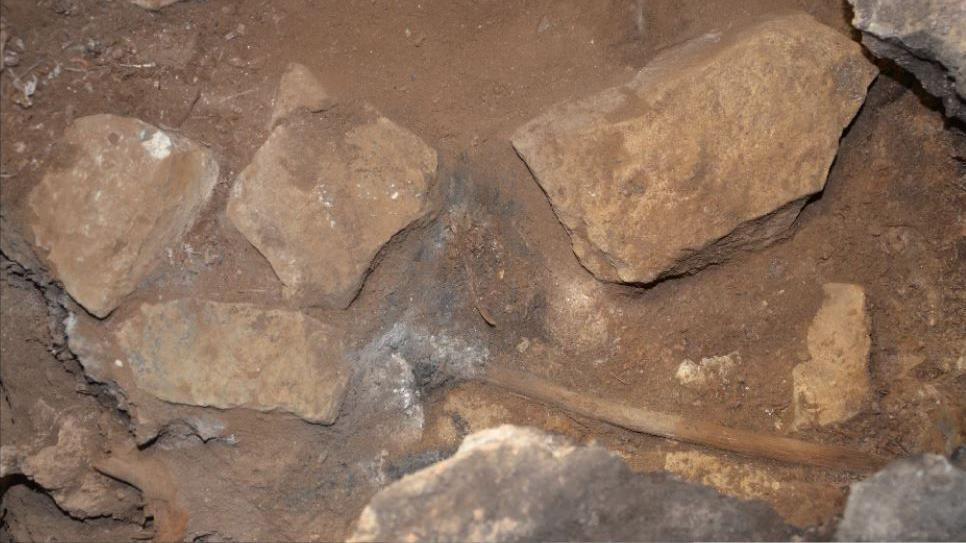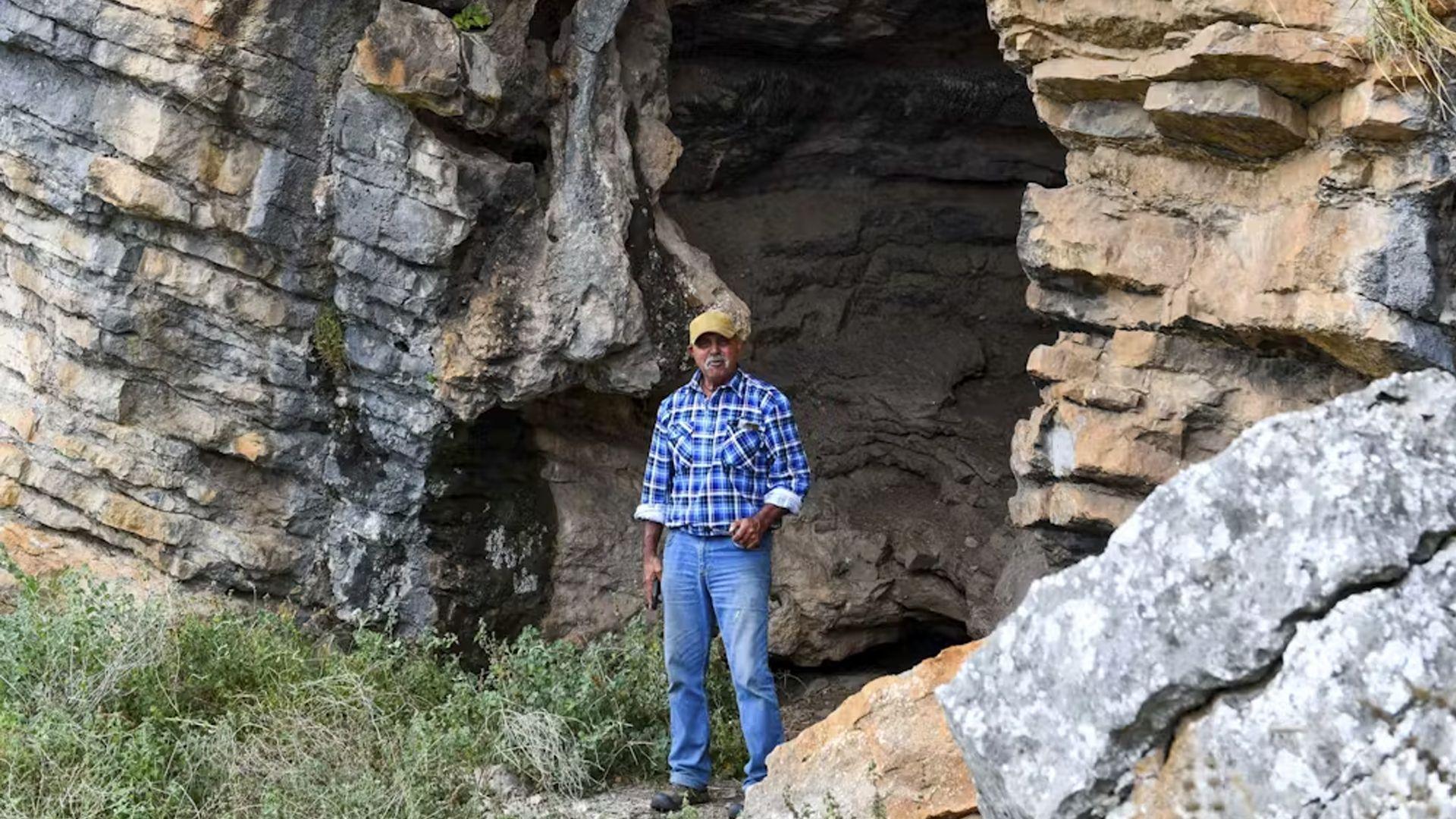What is the oldest human tradition of all time?

- Published
Celebrating New Year, or getting someone a gift for their birthday, humans have lots of traditions that have been around for hundreds or thousands of years.
Now, a team of archaeologists in Australia think they have discovered the longest-continuing human tradition, ever.
A magical ritual performed in Australian caves by a mulla-mullung - a powerful medicine man or woman - used to help heal a sick person, or 'curse' an enemy.
The tradition belongs to the GunaiKurnai people, an indigenous nation of people who live near the Australian Alps, in the south east of the country, who are thought to have kept the tradition going for around 12,000 years.
Archaeologists discover 4,300-year-old Egyptian tomb
- Published28 January 2023
What is Pompeii and why does it matter?
- Published12 April 2024
How did archaeologists discover this?

Archaeologists found evidence of an ancient ritual in Australia.
Back in 2020 a team of archaeologists, working together with local GunaiKurnai people, set out on a research dig in Cloggs Cave, near the town of Buchan, in the state of Victoria.
Preserved under layers of ash and dirt, the team uncovered two tiny fireplaces surrounded by rocks, each containing a trimmed stick of Casuarina, a wood native to Australia, with a burnt end.
Using radiocarbon dating - a type of technology that allows scientists to work out how old things are - they found out that the sticks were around 11,000 and 12,000 years old.
The scientists also looked at samples of the stick in a laboratory, where they discovered that the sticks were covered in a type of animal fat.
Fatty acids do not dissolve in water and can stay on objects for a long time.
After looking at all of the evidence from the dig, the archaeologists came to the conclusion that the caves had been used to practice ancient rituals, and not for living in.
The team was especially excited, because no GunaiKurnai ritual site like this had ever been discovered by archaeologists before.
What would the rituals have been like?

One of the sticks discovered at the site
A researcher named Alfred Howitt, wrote about GunaiKurnai rituals in 1887 and said: "The Kurnai practice is to fasten the article [something that belonged to the victim] to the end of a throwing stick, together with some eaglehawk feathers, and some human or kangaroo fat."
Explaining that the stick is then put in a slanted position in the ground, next to a fire, he continued to explain that the 'wizard' or medicine man would sing the individual's name "and when the stick falls the charm is complete."
"The practice still exists," he wrote.

GunaiKurnai Elder Uncle Russell Mullett was present at the "amazing" discovery
Speaking about the discovery, GunaiKurnai Elder Uncle Russell Mullett, who was present at the dig, and co-author of the study, said: “This cave is a like a museum holding the history of our people,”
"For it to survive is just amazing. It’s telling us a story. It’s been waiting here all this time for us to learn from it. Reminding us that we are a living culture still connected to our ancient past. It’s a unique opportunity to be able to read the memoirs of our Ancestors and share that with our community," he said.
Archaeologist Bruno David, who was part of the team that made the discovery, wrote in the study: “That’s 12,000 years of continuity, passing down knowledge from one generation to the next, of a cultural practice that has remained almost intact along 500 generations.”
“That’s absolutely remarkable,” he added.
